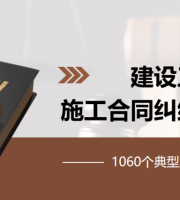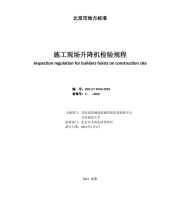The characteristic value of vertical uplift bearing capacity of single pile shall be taken as 50% of the vertical uplift ultimate bearing capacity of single pile..
Key points for the implementation of pile foundation inspection the starting time of pile foundation inspection shall meet the following conditions: (1) the concrete strength of the tested pile shall not be less than 70% of the design strength and 15MPa by using strain method and acoustic transmission method; (2) The core drilling method is adopted for testing, and the concrete age of the tested pile shall reach 28d, or the strength of the curing test block under the same conditions shall meet the design strength requirements; (3) Rest time before general bearing capacity test: sand foundation shall not be less than 7d, silt foundation shall not be less than 10d, unsaturated cohesive soil shall not be less than 15d, and saturated cohesive soil shall not be less than 25d.
Class I pile body is complete; Class II pile has slight defects in the pile body, which will not affect the normal exertion of the bearing capacity of the pile body structure; Class III pile has obvious defects, which has an impact on the bearing capacity of pile structure; Class IV pile has serious defects.
2 single pile vertical uplift static load test: apply vertical uplift force on the top of the pile step by step, and observe the uplift displacement of the top of the pile with time, so as to determine the corresponding test method of single pile vertical uplift bearing capacity.
Pile integrity test shall be carried out after foundation pit excavation.
To determine whether the vertical compressive bearing capacity of single pile meets the design requirements; Detect the pile defects and their locations, and determine the pile integrity category; Analyze the soil resistance of pile side and pile end; Monitor the piling process.
Objective to detect the defect and position of pile body and determine the integrity category of pile body.
By measuring the pile top settlement of single pile under different loads, the Q-S curve and S-lgt and other auxiliary curves of static load test are obtained, and then the characteristic values of vertical compressive bearing capacity of single pile and other parameters are deduced according to the curve.
Objective to measure the length of cast-in-place pile, the concrete strength of pile body and the sediment thickness at the bottom of pile, judge or identify the geotechnical properties of pile end bearing layer, and determine the integrity category of pile body.
The copyright of the union of the 3 tiktok is classified into the inspection of pile foundation before construction and after construction.
The single pile horizontal load test should adopt the one-way multi cycle loading and unloading test method.
When it is necessary to measure the pile stress or strain, the slow maintenance load method should be adopted.
The purpose is to determine the horizontal critical and ultimate bearing capacity of single pile and estimate the soil resistance parameters; Determine whether the horizontal bearing capacity or horizontal displacement meet the design requirements; Through the pile strain and displacement test, the pile bending moment is measured.
3 the horizontal static load test of single pile adopts the method close to the actual working conditions of horizontally loaded pile to determine the horizontal bearing capacity of single pile and the horizontal resistance coefficient of foundation soil, or the test method to inspect and evaluate the horizontal bearing capacity of engineering pile.
Objective to determine the ultimate vertical uplift bearing capacity of single pile; Judge whether the vertical uplift bearing capacity meets the design requirements; Through the pile strain and displacement test, the uplift side resistance of the pile is measured.
The test pile is the basis for testing before construction, and the main limit is to determine the ultimate bearing capacity of single pile.
During the acceptance test, the pile integrity test should be carried out first, and then the bearing capacity test.
The characteristic value of the vertical compressive bearing capacity of a single pile shall be taken as 50% of the vertical compressive ultimate bearing capacity of a single pile.
5 low strain method low strain detection method uses a small hammer to knock the pile top, receives the stress wave signal from the pile through the sensor bonded to the pile top, uses the stress wave theory to study the dynamic response of the pile-soil system, and inversely analyzes the measured velocity signal and frequency signal, so as to obtain the integrity of the pile.
After construction, the engineering pile testing that provides the basis for acceptance mainly includes ① single pile bearing capacity and ② pile body integrity testing.
The integrity of pile body is classified into four categories: class I pile, class II pile, class III pile and class IV pile.
4 core drilling method the core drilling method mainly uses a drilling machine (usually with an inner diameter of 10mm) to take core samples of the pile foundation.
According to the core samples taken, the length of the pile foundation, concrete strength, sediment thickness at the bottom of the pile and the condition of the bearing layer can be clearly judged.
Single pile vertical compressive static load test.
This method uses a heavy hammer with a hammer weight of more than 10% of the weight of pile body or more than 1% of the vertical bearing capacity of single pile to hit the pile top with a free fall, so as to obtain the relevant dynamic coefficient, and apply the specified program for analysis and calculation, The integrity parameters of pile body and the vertical bearing capacity of single pile are obtained, which is also known as case method or cap WAPE method.
There are seven methods for pile foundation detection.
The purpose is to determine the vertical compressive ultimate bearing capacity of single pile; Determine whether the vertical compressive bearing capacity meets the design requirements; Through the pile strain and displacement test, the pile side and pile end resistance are measured to verify the test results of vertical compressive bearing capacity of single pile by high strain method.
Objective to detect the defects and position of cast-in-place pile body and determine the integrity category of pile body.
Tiktok: search engine: Luban’s copyright in the construction of the zhuye8866 alliance.
Selection conditions of inspected piles for acceptance inspection: (1) piles with questionable construction quality; (2) Piles with abnormal local foundation conditions; (3) Some class III piles shall be selected during bearing capacity acceptance; (4) Piles considered important by the designer; (5) Piles with different construction processes; (6) It should be selected evenly and randomly according to the regulations.
7 acoustic transmission method acoustic transmission method is to embed several acoustic measuring pipes in the pile as the channel for ultrasonic pulse transmitting and receiving probe before pouring pile foundation concrete, use ultrasonic detector to measure the acoustic parameters when ultrasonic pulse passes through each cross section point by point along the longitudinal axis of the pile, and then use various specific numerical criteria or image judgment for these measured values, The pile defects and their locations are given, and the pile integrity category is determined.
6 high strain method high strain detection method is a method to detect the integrity of pile foundation and the vertical bearing capacity of single pile.
The rest time of slurry wall protection cast-in-place pile should be extended.
Single pile vertical static load test refers to uniformly transmitting the vertical load to the building foundation pile.
1.




